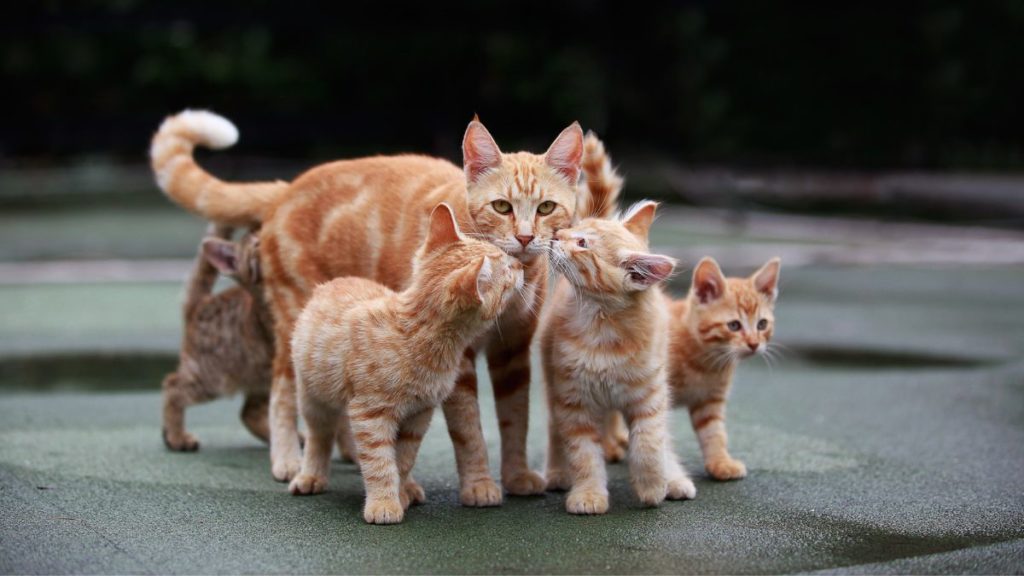Bringing a cat home means welcoming a tiny whiskered soul into your nest. To find the best cat for your family, think beyond looks: temperament, care, health, budget, and how you live day to day. Ready to meet your future sidekick?
Temperament: the real deal-breaker
Every cat has a distinct vibe. Some are social butterflies who want in on everything; others are zen observers who love soft blankets and sunny windowsills. The trick? Match their energy with yours.
- Busy home with kids: look for gentle, tolerant sweethearts (think Ragdoll, Maine Coon, British Shorthair).
- Quiet household: calm, laid-back companions shine here (Chartreux, well-socialized Persian).
- Craving conversation: Siamese and Bengals are vocal and interactive if you love a chatty buddy.
Not sure where to start? Browse our guide to the calmest cat breeds to set everyone up for a peaceful life.
Grooming needs: fluff comes with effort
Coat type changes everything. Long-haired beauties often need near-daily brushing; medium coats do well with weekly sessions; even hairless cats need regular skin and ear care.
- Long hair: frequent brushing, knot checks, and hairball prevention.
- Short hair: light but regular grooming to reduce shedding on your clothes (and couch!).
- Hairless (Sphynx): gentle skin cleansing and routine ear care.
Want a simple routine that sticks? Steal easy techniques from our cat grooming guide and keep coat care stress-free.
Quick tip: Keep a small “grooming basket” by the sofa with a slicker brush, treats, and a lint roller. Two minutes while you watch a show beats a tangled fur marathon later.
Health: ask, check, prevent
Some breeds or lines are predisposed to certain issues (cardiac, renal, joint). Ask rescues or reputable breeders about health testing, and plan regular vet checkups.
- Weight: stocky cats like British Shorthairs can pack on pounds—watch portions and playtime.
- Respiratory/heart: brachycephalic faces may need extra monitoring and gentle exercise.
- Prevention: vaccines, parasite control, and dental care truly pay off long term.
Want a clear overview before deciding? This primer on common cat health problems helps you plan calmly.

Budget: love… and receipts
From adoption fees to food and vet care, costs vary with age, health, and the gear you already own. A little planning avoids surprises.
- Start-up: spay/neuter, ID, core vaccines, carrier, scratcher, bowls, litter box.
- Monthly: quality food, litter, preventatives (flea/worm), insurance if you choose.
- Unexpected: emergency consults, dental work, sudden treatments.
Curious about real numbers? Compare estimates in the price of a cat to map your first year with confidence.
Common mistake to avoid: choosing only for looks. A stunning but anxious cat in a lively home may struggle. Prioritize temperament and lifestyle fit—you’ll both be happier.
Space: think vertical, not just square meters
Studio or spacious apartment, most cats thrive if the environment is enriched. The trio they adore: climb, observe, hide.
- Go up: shelves, sturdy cat tree, window perch for bird TV.
- Resource zones: quiet litter area, fresh water spots, multiple cozy beds.
- Daily play: wands, balls, varied scratchers to burn energy and stress.
Setting up a mini adventure park? Our guide to the best cat trees helps you pick safe, solid gear that cats actually use.
Fun fact: The Devon Rex often sports curly whiskers. Yep—ribbed, wavy vibrissae… and a clingy, cuddle-prone personality.
Allergies at home?
If someone is sensitive, don’t panic. All cats produce allergens, but amounts vary by individual. Meet-and-greet sessions help you assess reactions in real life.
- Introduce slowly and ventilate regularly.
- Wash textiles often; brush the cat outside if possible.
- Arrange longer trials before adopting, when you can.
Need clarity before you commit? Read our guide on cat allergies to prepare smartly.

Age: kitten, adult, or senior?
Energy and needs shift with age. Kittens are playful and hands-on; adults are usually more predictable; seniors treasure soft routines and comfy naps.
- Kitten: supervision, play, gentle training (hello, scratcher!).
- Adult: known temperament, often quicker adaptation.
- Senior: frequent checkups, cozy warmth, easy-access resources.
Curious about “human age” equivalents? Use this simple method to calculate your cat’s age and fine-tune expectations.
Adoption or breeder?
Shelter adoption changes two lives—the cat you welcome and the one who takes their place. Prefer a specific profile? A reputable breeder can guide you responsibly.
- Shelters: thoughtful matching and precious background info.
- Breeders: ask about health tests, socialization, and living conditions.
- Avoid: vague sources, too-good-to-be-true ads, no health paperwork.
Want to evaluate options like a pro? Here’s what a good cattery looks like, step by step.
Socialization: today’s habits, tomorrow’s harmony
Well-socialized cats handle changes, kids, and other pets more smoothly. Watch curiosity, comfort with touch, and recovery after small stresses.
- Daily life: enrich the environment and reward calm behavior.
- First meetings: go slow; let the cat approach on her terms.
- Another pet at home: scent swaps first, short controlled sessions next.
Bringing a new feline into your pride? Follow our playbook for introducing a new cat without conflict to set a peaceful tone.
Wrap-up
Choosing the best cat for your family means matching lifestyle and temperament, planning care and budget, and creating a cozy, confidence-boosting home.
One last secret: the right cat often chooses you too. When the heart says yes—and the checklists agree—that’s when the magic happens.
FAQ
What is the best cat for a family with children?
Gentle, patient breeds like Ragdoll, British Shorthair, and Maine Coon are great fits. Prioritize calm, well-socialized cats and supervise early interactions.
Which cat breeds adapt best to apartments?
Calm, easygoing breeds like Chartreux or a well-groomed Persian thrive indoors. Add vertical spaces and daily play for a happy, active routine.
How much should I budget for the first year?
Expect higher start-up costs plus monthly food, litter, and vet care. Get estimates in our first-year cost guide.
How can I tell if household allergies will be a problem?
Plan longer meet-ups and track reactions. For actionable steps, read our guide on cat allergies before you adopt.







